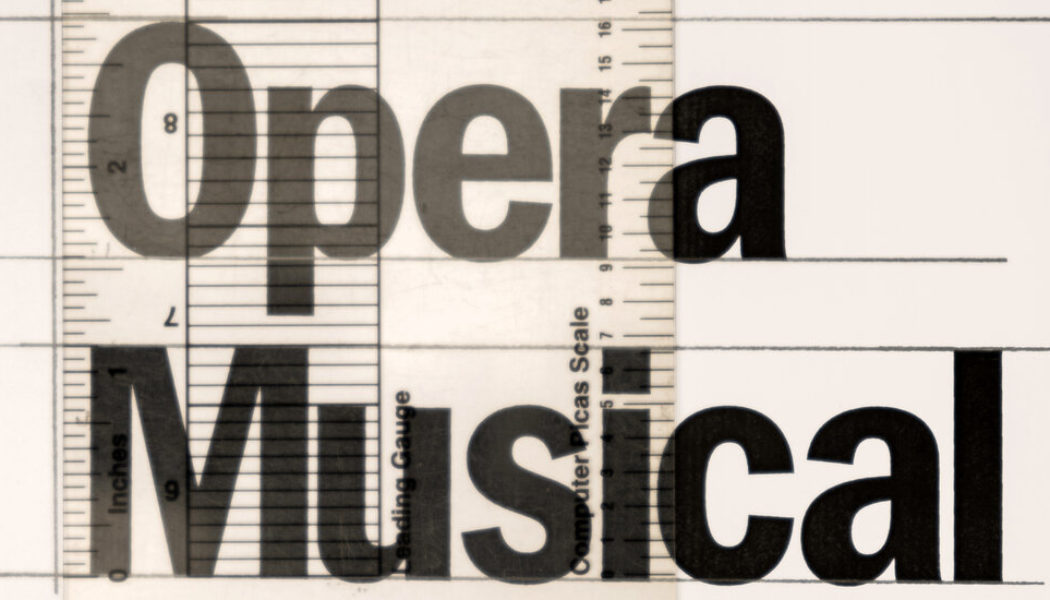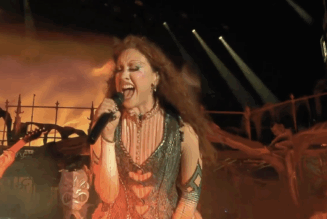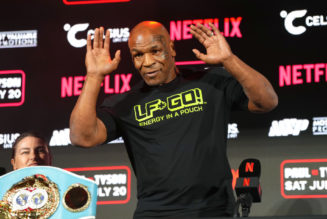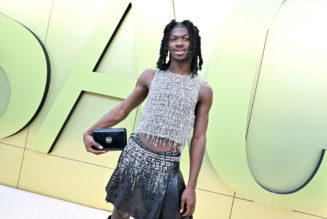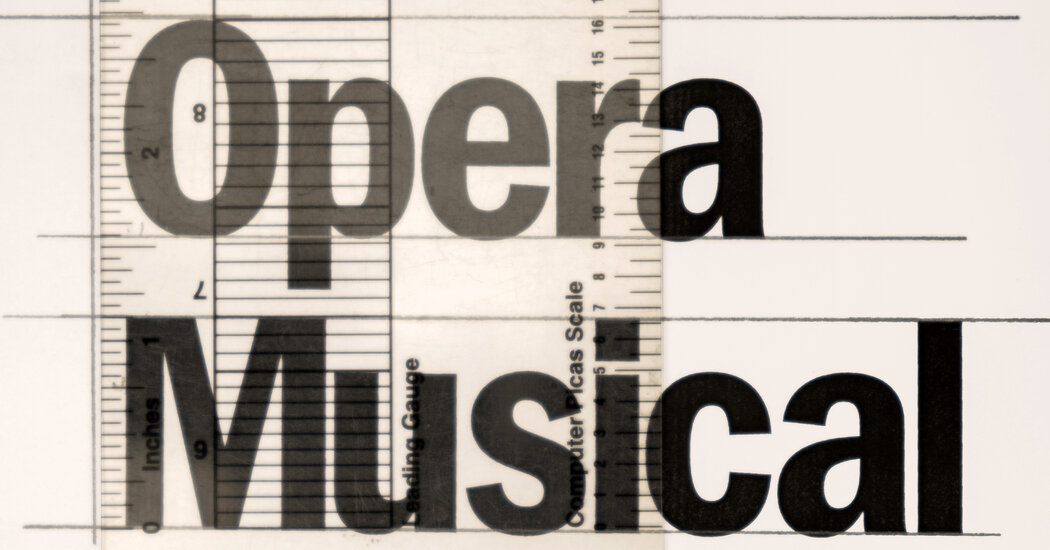
A part of me has always felt guilty about loving musical theater.
I have wondered whether I lacked some kind of sophistication, drinking in a general idea that operas by Verdi, Donizetti and Bizet are high art while “Show Boat,” “Gypsy” and “A Little Night Music” are, while quite respectable, somehow lighter, less awesome or have less, well, gravitas.
But I don’t think this makes sense, and I am referring not just to the well-known fact that some musicals have blurred the line between opera and musical (whatever that line is). Leonard Bernstein’s roots in classical music are obvious in “Candide” and “West Side Story”; Frank Loesser’s score for “The Most Happy Fella” is so rich and grand that it took up three LPs. But it can be hard to identify what is artistically lesser, even in musicals neither rooted in nor aiming anywhere near classical music style.
Nor am I making a claim that it isn’t right to rank some art forms as more intricate or awesome than others, or that all we should think about is whether people enjoy it. I love hot dogs; I love beef bourguignon. But a hot dog, no matter how well dressed, will never impress me as much as a good beef bourguignon, because the latter takes more work.
Rather, “Kiss Me, Kate” occupies the same artistic level for me as “La Bohème” because it’s just as rich and original. I would not say the same of “Grease,” despite the pleasures it lends. But there is a type of American show that started flowering in the 1920s and still exists today in the form of the musicals of Stephen Sondheim and his heirs that are hard to logically classify as opera’s country cousins.
American musical theater scores perhaps seem the less substantial achievement because they are usually put together by committee. Especially back in the day, the composer and lyricist submitted their songs as a piece of relatively easy sheet music written to be played on the piano, after which someone else worked out the key it was to be sung in and how many times, while a pianist transformed it into dance music if necessary and often wrote other dance music themselves. The composer also usually did not write the choral arrangements of songs where needed; that was someone else again. And whereas Verdi scored his own work for the orchestra, American musical theater composers rarely have. A person, or often a team of people, is sent off to score all of this for an orchestra.
But the result of the work of all of these hands was often a treasure trove of music sumptuously served up and worthy of loving preservation. The “Kiss Me, Kate” score has been carefully dusted off and restored from the original materials, for example. There are the songs themselves, the dazzling lyrics, the copious and richly orchestrated dance music throughout, the magnificent overture, plus an entr’acte so good that it used to be regularly used as the overture on LPs because it was shorter. It is unclear to me that the work between the covers is less sophisticated as art than the score of “The Barber of Seville” that is on the music library shelf a few yards over. It is no accident that there are scholars who submit “Kate” and its ilk to sustained analysis.
I have written here about Joseph Horowitz’s idea that America’s true classical music has been, or should have been, the kind seasoned by Black American musical forms, which are native to this country, as opposed to the kind that imitates European classical music. But there is another way that we might rethink how we evaluate musical theater forms — namely, the story of operetta in America, which evolved into what later was called the musical play, and the concurrently evolving musical comedy.
First off, what has been called operetta — as in “little opera” and later the “musical play” — should be seen as an equal, rather than a subtraction, of what opera is as a form. In the late 19th century, as now, opera in America was often experienced in a language other than English and couched in the artifice of all lines being sung. Operetta appealed as a more immediately accessible form. Writing in English and stopping for dialogue, but for voices singing in “legit” style, complete with vibrato and sailing over a swelling orchestra, operetta composers like Victor Herbert, Sigmund Romberg and Rudolf Friml hardly thought of themselves as writing piffle. Or, to the extent that they may have thought of any of their music as “light,” it often was no more so than much opera music, which often seems heavier to English speakers more because it is in Italian, German, Russian or French than anything else. Why is the song “Habanera” in the opera “Carmen” weighty while “Softly, as in a Morning Sunrise” from the operetta “The New Moon” by Sigmund Romberg is just candy?
When one can hear the whole score, for example, of Romberg’s once famous operetta “The Student Prince,” from curtain to finale rather than a selection of isolated songs, as is typical of LPs (and thus later CDs), it offers as filling a musical meal as anything by Donizetti. The difference is a matter of style, not substance. “Show Boat,” written by the Broadway veterans Jerome Kern and Oscar Hammerstein, included in its original version a plangent spiritual of mourning “Mis’ry’s Comin’ Around” that challenges any sense of musicals as fluffy or silly, glumly opening even the overture with a crying splash. This is serious music.
Meanwhile, the more vernacular genre called musical comedy grew from songs of the street and the tavern in the late 1800s and was seasoned especially in the 1910s by ragtime and jazz. By the 1920s and 1930s, musical comedies were being accompanied by pit orchestras of 20 or more playing in a deft arrangement style that was one part how Black big bands had come to sound and one part the contribution of talented classically trained orchestrators applying their technique to the then-new music.
The result, again, was often great material, if barely noticed. Richard Rodgers and Lorenz Hart’s 1938 song “This Can’t Be Love,” introduced in the musical “The Boys From Syracuse,” was accompanied in its opening section before the chorus with dense filigrees in the woodwinds that are there simply as beauty, despite the fact that audience members at the time were likely paying more attention to the singers and the song than what was happening down in the orchestra pit. Only from a recording of the show using the original orchestra parts playing right into your ear does this decoration readily come across.
This is like the statues at the top of Gothic cathedrals that no human could have really seen when they were new because there were no airplanes then, apparently crafted — like those wind parts for “This Can’t Be Love” — for God’s eyes.
There was a musical about Superman — “It’s a Bird, It’s a Plane, It’s Superman” — and for the song “We Don’t Matter at All,” about humans’ ultimate insignificance, Eddie Sauter came up with a dense, pointillistic and infectious accompaniment from the harp, winds and brass that manages to sound, of all things, like electrons skittering around an atom’s nucleus would if they did it musically. Lucille Ball starred in a musical in 1960 called “Wildcat.” It wasn’t much plotwise, but the scoring is magnificent. The overture alone is an elaborate rollicking, bleating glory that makes the songs sound like, well, Christmas, strawberry Fanta or being tickled a little too much — take your pick.
I must qualify, of course. There are certainly operas that surpass the Golden Age-style musical in intricacy. Richard Strauss’s works, for example, are thornier — and I mean that in a good way — than “Kiss Me, Kate.” I refer mainly to opera before Wagner: I’m comfortable considering his “Ring Cycle” artistically weightier work than “How to Succeed in Business Without Really Trying.” But then, these days, musicals have come to push their own envelope in terms of complexity as well. Joshua Schmidt and Jason Loewith’s musical version of “The Adding Machine,” which played in New York in 2008, is one of the most marvelously weird and often kaleidoscopically busy musical theater scores I have ever heard, and it sits in my ear in the same place as Strauss’ “Salome” or “Der Rosenkavalier,” including requiring repeated listenings to fully get.
But overall, my sense of musical theater in America is that we may undervalue that the higher forms of the Broadway musical are every bit the equal in artistic quality of operas like “Don Giovanni.” That opera’s courting duet “Là Ci Darem la Mano” is lovely, but then, so is the “Show Boat” song “Make Believe,” and for many of the same reasons. It isn’t that both of them are music, and there’s no point in making distinctions. It’s that both of them are great music.
